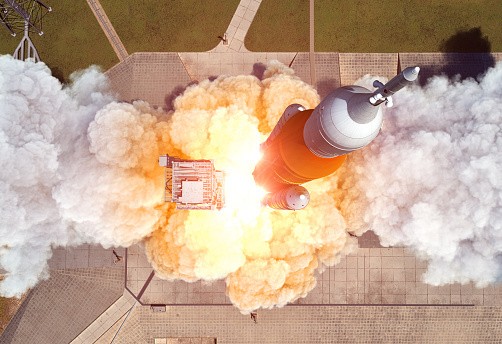
A privately owned Chinese space company mistakenly launched a rocket during ground tests, which caused a huge explosion.
Accidental Rocket Launch
On the 30th of June, the space rocket of a Chinese private company crashed and exploded into flames near a city after it was inadvertently fired during ground tests. The disaster involved a medium-lift orbital launch vehicle, the Tianlong-3, developed by the private Chinese aerospace manufacturer Space Pioneer.
Also known as Beijing Tianbing, Space Pioneer is a small group of private-sector rocket makers that has abruptly grown within five years.
During the disastrous launch, Tianlong-3 soared straight up in the air, then lost power and turned horizontally. Then it fell back down to Earth and exploded into flames on nearby forested hills near the city of Gongyi in central China. The body of the rocket immediately disintegrated when it fell into the mountain.
Parts of the rocket stage were scattered within a "safe area," according to the statement from the Gongyi emergency management bureau. The explosion caused a local fire, though there were no reports of casualties according to preliminary investigations of the unplanned flight.
It is not usual for rocket pieces to fall back down to Earth in China after Chinese launches, but it is highly unusual for a piece of a rocket under test to make an unplanned bright exit from its test site and crash down.
In April 2023, Space Pioneer launched a kerosene-oxygen rocket called Tianlong-2, making this company the first private Chinese firm to send a liquid-propellant rocket into space.
In 2014, China allowed private investment in its space industry, thereby opening the sector to a rush of commercial companies. While many firms started making satellites, others, such as Space Pioneer, worked on reusable rockets, which can slash mission costs considerably.
These companies have their test sites along coastal areas in China. They were deliberately located by the sea due to safety reasons. Some, however, are sited deep in the country's interior like Space Pioneer's test center in Gongyi which is home to 800,000 people.
The two-stage Tianlong-3, also known as the "Sky Dragon 3," is a partially reusable rocket. Space Pioneer brags that its performance is comparable to SpaceX's Falcon 9.
What Caused the Unplanned Launch?
In a statement on its official WeChat account,the first stage of the Tianlong-3 rocket left its launch pad during a static fire test, due to structural failure at the rocket-test stand connection. On the other hand, it said in the update, the first stage of the Tianlong-3 ignited normally during the hot test but later detached from the test bench.
Right at launch, the onboard computer automatically shut down, and the rocket fell into a deep mountain 0.93 miles southwest of the test bench.
Most space rockets always come in several stages. The first or lowest stage starts just after launching and burns to propel the rocket upwards. On exhaustion of the fuel, the first stage falls off while the second stage ignites to keep the rocket in propulsion.
RELATED ARTICLE : Chinese Rocket Landed Vertically at Sea, Developing the Country's Sovereign Reusable Rocket Capability
Check out more news and information on China Space Exploration in Science Times.
© 2025 ScienceTimes.com All rights reserved. Do not reproduce without permission. The window to the world of Science Times.












